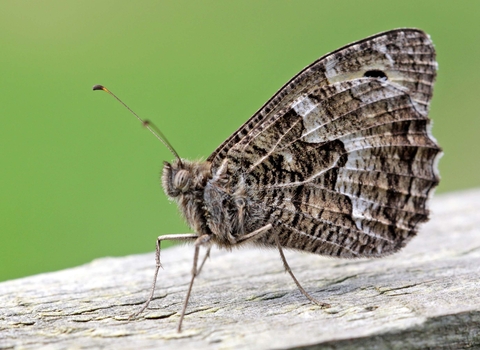
Grayling ©Margaret Holland
Grayling
The grayling is one of our largest brown butterflies and a master of disguise - its cryptic colouring helps to camouflage it against bare earth and stones in its coastal habitats and on inland heathlands.
Enw gwyddonol
Hipparchia semelePryd i'w gweld
June to SeptemberGwybodaeth am rywogaethau
Categori
Ystadegau
Wingspan: 5.1-6.2cmPriority species under the UK Post-2010 Biodiversity framework.
Cynefinoedd
Ynghylch
A medium-sized butterfly, the grayling inhabits sunny places; adults spend much of their time sunbathing on the ground, with their wings closed and angled to catch the full rays of the sun. Found around the coast and on southern heathlands, adults are on the wing in the summer, from June to September. Cryptic colouring provides the grayling with excellent camouflage, so it can be hard to spot on stony ground. The caterpillars feed on a variety of grasses including sheep's fescue, red fescue and marram grass.Sut i'w hadnabod
The grayling is mainly dark brown above, with washed-out orange markings. The underside of the forewing is orange and the hindwing has an intricate grey-and-black pattern. The best way to identify the 'brown' butterflies is by looking at the eyespots on their wings. The combination of orange and brown markings, together with two large eyespots on the underside of the forewing and one smaller eyespot on the hindwing, is unique to the grayling.Dosbarthiad
Found around the UK's coastline and on inland sites in southern England.Roeddech chi yn gwybod?
There are six subspecies of grayling occurring in the UK, including one found on the Great Orme in North Wales where they are smaller than normal.Gwyliwch
Grayling (https://vimeo.com/473849023)
Grayling ©Tom Hibbert
